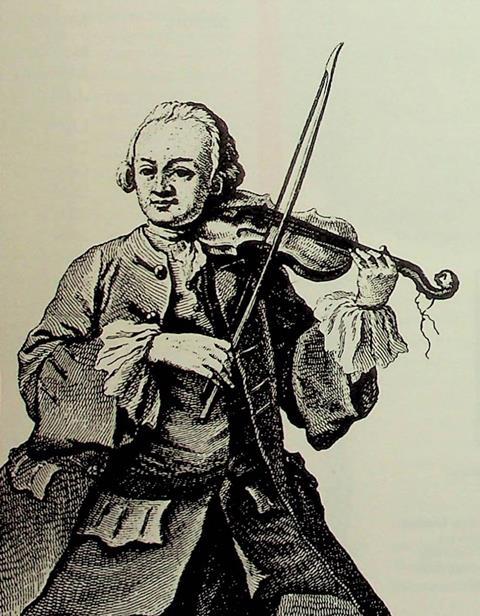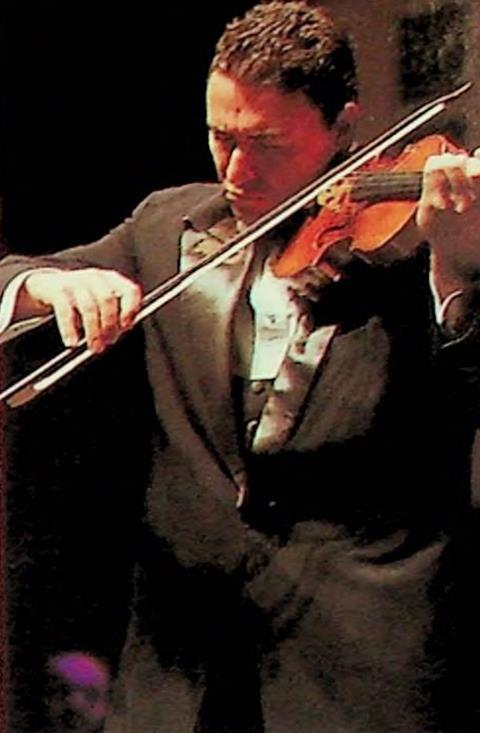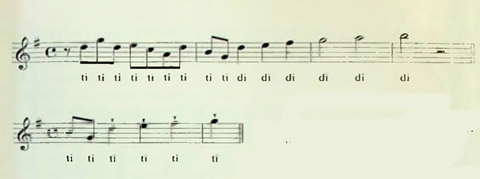Current trends encourage stylistically informed performances of Baroque and Classical music, but how does an uninitiated player get started? Pauline Nobes offers some advice in this feature from September 2003


There used to be two distinct schools of playing, Baroque and modern, of which it was thought that ‘ne’er the twain shall meet’. Now, however, there seem to be bandwagons travelling constantly between the two; period-instrument groups frequently import modern players and in their turn modern orchestras invite old-music specialists. To facilitate this cross-fertilisation, what compromises can be made regarding equipment and the various elements of technique?
Using modern instruments for all periods of music is a hefty compromise. However, combining specialisation with earning a living is hard, especially considering the requisite financial outlay for at least two quality instruments and three or four different models of bow.
Makers today often offer half-conversions, less expensive than full-conversions, to keep costs down for players, as well as producing fine modern copies. But, although the sound of the modern instrument differs considerably from that of period instruments, with a few modifications, their use is arguably another of many compromises necessitated by modern-day performance and recording.
If players wish to stick to their one, beloved instrument in modern set-up, to what extent can historical performance practice be pursued? The bow can be a simple place to start - copies are relatively inexpensive and widely available. Most Baroque bows are significantly lighter than modern bows with the balance point generally lower: holding a modern bow slightly away from the frog approaches this lighter balance. When choosing strings, there is a wide selection of high-quality gut strings available now, of the sort that were in common usage.
Playing without a chin rest affects sound and projection as much as many technical aspects such as vibrato and shifting andis enlightening for a historic approach. After all, Baroque repertory was conceived for violins without chin rests: the one invented by Spohr only started to be introduced around 1820. Leopold Mozart’s comfortable position at the neck varies considerably from a modern-day hold where one freely turns pages with the left hand.
Pitch is a question of choice too.Baroque pitches varied between 392Hz and 415Hz, with Classical and early-Romantic periods ranging between 430Hz and 438Hz, according to studies of contemporary wind instruments and organ pipes. Baillot’s attempt to find order by standardising 440Hz came in the middle of the 19th century. Slackening down to 415Hz, a semitone lower, may come as an enormous relief to an old instrument, as well as altering articulation possibilities. Also, harmonic rather than melodic intonation was expected, as equal temperament was not established as the norm.
Then, as now, what was deemed good taste in performance style, Ie bon gout, varied enormously - the criticisms of and contradictions between the French and Italian schools at the turn of the 18th century are infamous. The typical elegance and poise characterised by the dances of the French overture suite contrast greatly with the extrovert virtuosity displayed in the Italian concerto, both sometimes far removed from the rules of the Berlin school described by the often conflicting accounts of Quantz and C.P.E. Bach.
Many controversies arise from the fact that details of performance style transcend notation, not only with expression but also when interpreting rhythms and adding embellishments. Inegalite was assumed by many non-French composers such as Bach, Telemann and Purcell. This is a loosening of the rhythm, where equally written separate notes are ‘swung’ in a strong-weak manner. Generally a smooth articulation, it affects notes that are half the value of the main beat, particularly during stepwise motion, unless counter-indicated by slurs, dots, or instructions such as egale.
The limits of notation and traditional shorthand may also necessitate over-dotting in dotted rhythms (for example, with ♪. playing notated ♪s as ♪ to match other lines), as well as aligning ♪s with pervading triplets and eliminating other rhythmic inconsistencies.

This happens especially when intensifying or confirming the musical ‘affect’, a word used to describe the emotion of the moment. Bear in mind that making the music consistent may sometimes defeat the composer’s wishes, especially when intensification or expression are called for. Details of phrasing and dynamic shading are expected although not notated. In his Tables, showing ‘the proper execution of each note’, Quantz indicates strong, weak and crescendo moments but says that ’you must not always take these words in their extreme degree; you must proceed as in painting, where so-called mezze tinte or half-tints… are employed to express light and shadow.’ Notated dynamics, mostly piano and forte (or dolce and forte), sometimes indicate solo and tutti passages rather than extremities of volume. The correctness of instrumental imitation of vocal slurs is also debatable: a certain adding of slurs is recommended, as is being true to the composer’s score, although inconsistencies are common in original sources aind markings between parts sometimes even oppose.
Cadential trills and other ornamentation were also assumed. Rules of upper-note trills are well documented and generally fast notes require a quick trill with little emphasis on the upper note whereas slow notes demand more expressive, possibly accelerating trills with appoggialura and maybe a termination. French-style music requires decoration by way of trills, mordents, battemenls, port de voix and other ‘twiddles’, whereas Italian style and cadenza points require improvisation with harmonic consequence: there are many written-out examples and explanations of both types to learn from. Bach included embellishments in his scores rather than risking defamation of his art by overzealous performers.

The quintessence of Baroque style is hierarchy, with some notes taking more importance according to certain rules - for example first beat stronger than second, dissonance stronger than resolution, with notes grouped and graded like syllables in a word. Musical language was seen as a rhetorical expression of various Passions, such as Fury, Resolution, Grief, Pleasure, like speech, combining poetic nuance with punctuation between phrases and sub-phrases. Leopold Mozart recommends that good violinists should know their grammar and syntax as well as being ’great grammarians, or better still rhetoricians or poets’.
Choice of tempo, too, has a huge impact on style, so consultation with first-hand contemporary description is recommended. Detailed descriptions of the character of various dances and their relative tempos are abundant, and where no specific markings are given considerations include harmonic pace, the nature and complexity of the counterpoint, conventions of lime signatures, exact meanings of given tempo and character markings and any affiliation to dance. These may in turn be affected by traditional mood associations coming from key or melodic make-up, compositional intent and even the size and resonance of the performing venue.
Modern-day tolerance of dissonance has been raised by post-Classical tonal developments, over-shadowing many subtleties of Baroque harmonic tension. The strengths of various figured-bass dissonances are carefully listed in Quantz’s Art of Playing the Flute, but for the little experienced, he suggests simply playing louder when there are a lot of numbers!
The omnipotent rule of down bow, codified in Muffat’s observations of Lully’s bowings, reflects the importance of hierarchy, organising strong beats to be played with a down bow, assuming that the up bow is the weaker. The coveted equalisation of down- and up-bow strokes which developed later isinappropriate when administering Baroque bowings and articulation, regardless of which bow is being used. With the modern bow this effectively means working against certain inherent design features in order to make sense of the rule.
The ideal sound is pure and sweet. Mozart demands that violinists aspire to the qualities of the voice; he also advises playing with ‘earnestness and manliness’, criticising ‘hare-brained’ violinists who ’imagine the greatest inaudibility to be sweet’. He complains too about ’shrill sounding open strings… which pierce the ear too sharply’.

Vibrato (also called ‘tremolo’ or ‘close shake’) was considered an improvement to the sound rather than an integral ingredient. Mozart describes it as ’a small, slow movement’ used to intensify the expression created by the bow and criticises its consistent use, likening it to the appearance of palsy. Geminiani, after praising the effect of vibrato on long notes, writes that ’when it is made on short notes, it only contributes to make the sound more agreeable and for this reason should be made use of as often as possible.’ It is not known precisely how ‘more agreeable’ sounds, but in general the many descriptions imply that the preferred vibrato would not have been automatic, particularly wide or continuous.
Orchestrally, it may be that a consensus of staying in low positions, using well-sounding open strings and little vibrato would offer the aspired-to purity’ of sound. In the solo repertory higher positions were normal fare: the methods by Geminiani, Herrando and Nogueira clearly indicate shifting and practising in position, while Mozart recommends that slurs should be kept on one string wherever possible for an even tone.
In his flute method Quantz clarifies a general principle, using ti and di to represent hard and soft tonguing respectively: ’If leaps are formed by the quavers in the Allegro, ti is used for them. If, however, other notes follow which ascend or descend by step, whether they are quavers, crotchets or minims, di is used… If strokes are placed above the crotchet ti is kept.’
Mozart applies this to string technique by suggesting slurs for notes ‘at close intervals’ but separate strokes for ‘notes far apart’ and recommends that this should be ‘arranged to give pleasant variety’. Quantz, whose flute method includes a wealth of material specifically aimed at string players, also calls for variety: ’You must adjust your tonguing and bowing in such fashion that you give each note greater or less stress/
When playing separate notes with ‘greater or less stress’ (and organising them into groups without slurring), a varied bow speed, as well as weight, is invaluable. During his lengthy exposition of bow divisions, Mozart advises that ’the stroke in soft tone must be drawn very slowly; when increasing the tone somewhat quicker; and in the final loud tone ver}’ quickly’. He warns that ’each tone, even the strongest attack, has a small, even if barely audible, softness at the beginning of the stroke, for it would otherwise be an unpleasant and unintelligible noise.’

Modern bow design and musical demands have encouraged power and continuity of sound, while the tapering of the Baroque bow favours the release of sound, its lightness and lower balance point assisting phrasing off with air between the strokes, as well as articulations which maintain a thread of sound between notes, such as bow vibrato, where repeated notes are played in a single bow. The slur is consistently described as a phrasing off, an emphasis on the first note followed by a release.
Prepared and followed by a silence d’articulation, a small clearance or an almost imperceptible placement, the way of playing a slur varies according to the prevailing musical character. This is also the case with appoggiaturas. Lifting the bow at dotted rhythms is frequently recommended, although the amount of lift is not quantified. Geminiani gives a selection of signs including a staccato, where the bow is taken off the string at every note, and Mozart summarises different expressions: ’Merry and playful passages must be played with light, short and lifted strokes, happily and rapidly; just as in slow, sad pieces one performs them with long strokes of the bow, simply and tenderly.’
The art of playing the violin consists in giving that instrument a Tone that shall in a manner rival the most perfect human voice
Francesco Geminiani
The attention to detail and contrast naturally demands the eradication of any technique that promotes equality, such as spiccato, sautille, martele or detache, unless specifically indicated. Even when equal drawn very slowly; when increasing stress is implied, contention arises: daggers also indicate separation or emphasis and according to Quantz, the instruction ‘staccato’ rarely intends ‘a single species of note’.
The following examples are designed to identify and provide practice for some of these articulation considerations, based on vocal scores, since while expressing the ‘Passions’ Geminiani states that ’these extraordinary Emotions are indeed most easily excited when accompany’d with words’. That there was more than one way of interpreting a composer’s wish was an accepted element of performance practice, so a choice of options may also appear here.
Vivaldi Gloria
The rule of down bow demands down-up-up for each bar, with the weaker syllables on the up bow. The shape of the notes can also support the nuance of text: the os, particularly, being shaped into the string (soft-strong-soft), although not in the extreme, as Quantz would point out, and all strokes begin with Mozart’s ’small, even if barely audible, softness’. A moderate vibrato is appropriate in conjunction with the increase of bow intensity and a silence on the bar line allows time for diction (‘a-’ is a glottal stop) and underlines the hierarchy of metre.
Bach Magnificat
As above, first syllables are emphasised and the weaker syllable played by ’drawing the bow more slowly’. There are several choices of bowing direction: the rule of down bow requires a new down bow for the down beat of the fourth bar and the strong syllable ‘Pa-’. A retake on the barline carries the danger of an unwanted comma and bowing ‘Patri’ backwards would ignore the rule, although Geminiani refers to the ‘wretched rule of down bow’. Hooking (often recommended by Mozart) or taking another down bow for the quaver ‘-ri-’ leaves the half bar and last syllable (both weak) on the preferred up bow, according to the rule. Regardless of bowing direction, important considerations are the release of the dotted note, softness at the end of the the stroke and the recommended lift after the dotted note.
Rameau Orfeo
The duration of the quaver and semiquaver are dictated by notational conventions of vertical alignment within the context of inegale in a C time signature. The type of articulation is determined by its musical ‘affect’, heightened by Rameau’s choice of tonality, C minor, which he describes as ‘tender’, and by the opening stepwise motion of each part, needing a stroke which is what Quantz describes as ’not (‘hart’). Geminiani’s recommended vibrato for such moments of action is ’shorter, lower and softer than that which is used to depict ‘majesty and dignity’. The shape of the dotted note portrays the strong syllable ‘-mour’, with an ensuing lift imitating the vocal comma. A clearance of the violin slur at the bar line after a ’gradual fading away of the tone’ (Mozart) clarifies the diction between ‘mon’ and ‘crime’ as well underlining the hierarchy of the bar. An increased dynamic is expected after the rhythmic acceleration in the second bar, preparing the third bar as the textual and harmonic high point.
In the last bar an emphasis on the second beat, against the hierarchy of metre, imitates the vocal line, using an appropriately faster bow stroke. A quick fix or a general whitewashing with Baroque style carries the danger of watering down the worthwhile scholarship and hard gained performance practice achieved over the last four decades. But incorporating stylistic awareness into modern instrument performances doesn’t have to be just an easy option for players but rather a valid supplement to the already diverse and distinctive styles existing within the early music scene. As we continue to gain insight into the composer’s expectations, perhaps the upper limit of modem-day compromises should be when our playing becomes detrimental to the ‘Intention of Musick’.
Read: Historically informed performance: Baroque revolution
Read: Leila Schayegh’s top 5 tips on historically informed vibrato
Topics
Historically informed performance: Baroque revolution
- 1
- 2
- 3
- 4
- 5
- 6
- 7
- 8
- 9
- 10
 Currently reading
Currently readingLong read: Playing Baroque and Classical




















































No comments yet